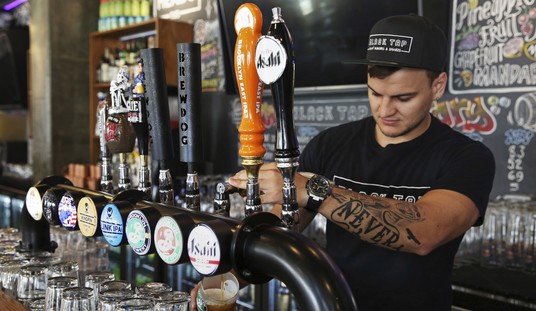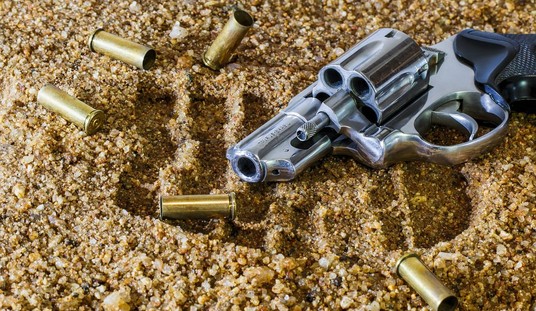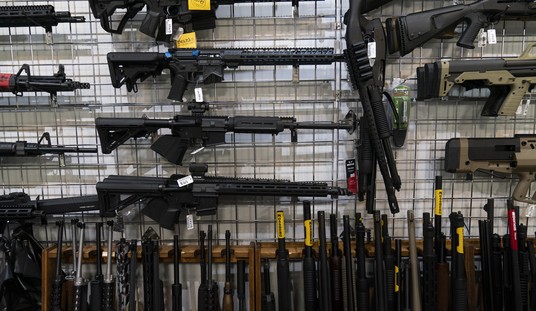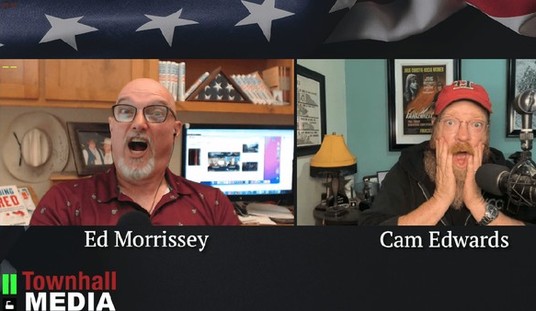Spare keys, smoke alarms, carbon monoxide detectors, fire extinguishers, electronic security systems, flood lights, cellular phones, first aid kits, flashlights, safety matches, butane lighters, candles, knives, hammers, and axes are emergency rescue equipment. All these tools go together as part of an emergency rescue system, and no well equipped home should be without any of them. Defensive firearms are also emergency rescue equipment. However, many folks who choose to own a defensive firearm do not realize the necessity of coupling it with other essential defensive tools as part of their defensive, emergency rescue system.
SCOPE OF THE PROBLEM
The problem is that a firearm is a tool of last resort, to be used only in the gravest extreme, to protect innocent life from immediate and otherwise unavoidable death or grave bodily harm. If you aim a gun at a person, you had better be certain that he possesses both the ability and the immediate opportunity to cause your death or grave bodily harm, and that he is acting in such a manner that a reasonable and prudent person would assume he was using those powers to place your innocent life in jeopardy. (See Massad Ayoob’s books under References.)
The gun is the ultimate, long range force multiplier. In any situation where force is indicated, a sane person uses only the amount of force necessary to solve the problem at hand. If you locked yourself out of a room in your house, you wouldn’t use an axe to break down the door if you had a spare key or a tool to jimmy the lock. Hopefully, you wouldn’t use a hammer to push a thumb tack into a cork board, or this discussion is going nowhere! Similarly, only a crazy person would use a firearm to repel a low level threat when less-than-lethal force (e.g., a verbal warning, pepper spray, a hand strike, a knee to the groin, a big stick) is all that may be necessary to take care of it.
The well prepared person is equipped with a range of less-than-lethal force options (e.g., fast feet, a loud voice, a good palm-heel strike, a well aimed kick, pepper spray, a reliable impact weapon, a blinding illumination tool) to deal with social threats of the two-legged variety when the ultimate in force is not called for.
Unfortunately, if the only tool you have is a hammer, every problem may look like a nail! If you own a gun, this is not an option. However, if you need a hammer, a hammer alone may not enable you to drive that nail in where you need it. You had better have the right nail for the job, a pencil to mark the precise spot where the nail needs to be driven, adequate lighting to hammer the nail precisely, and a first aid kit in case you hammer your thumb! Similarly, a gun alone will not adequately solve your social problems of the threatening kind.
SOLUTIONS TO THE PROBLEM
If you choose to own a handgun for home defense, or if you carry a concealed handgun for self-defense, there are six essential, defensive, emergency rescue tools that you should always have at the ready and carry with your handgun as components of a total defensive, emergency rescue system: (1) a reliable, tactical flashlight, (2) reliable spare magazines for your semi-automatic pistol (or speed loaders for your revolver), (3) pepper spray, (4) a tactical folding knife, (5) a cellular phone, and (6) the Ayoob Dejammer. Let’s discuss each category of defensive, emergency rescue equipment in order of priority. (Note: the order is debatable.)
1. A reliable, tactical flashlight:
Criminals, like roaches, come out at night. That’s why more violent criminal attacks and gunfights occur at night or in low light. So, if you carry a gun, you should be prepared to light up the night. In order to do so, you must carry a reliable and powerful illumination tool. In my honest opinion, a personal, tactical flashlight is an essential companion to your carry gun and home defense gun. The defensive flashlight partnered with the defensive handgun serves several purposes.
A. Locate the threat: In order to deal with a threat, you have to first locate it. Ergo, the flashlight.
B. Identify the threat: We do not want to shoot at shadows, nor can we ever condone shooting at anything that we are not 100% sure is what we think it is. Recall universal firearm safety rule #4: Be sure of your target and what’s around it. Ergo, the flashlight.
C. Safe direction: We must never point a gun at anything we are not willing to destroy. (firearm safety rule #2.) A separate, hand-held flashlight permits you to identify a threat without pointing a gun at it until you confirm that it’s warranted to do so.
D. Disorient the threat: A super-bright flashlight beam in a confirmed goblin’s eye holes is sure to temporarily blind and disorient him. This can buy you, the defender, valuable time to either escape, or establish dominance in the confrontation.
E. Locate the target: Once you have a confirmed target, you need to establish its exact location in order to get a good sight picture—ergo, the flashlight.
F. First or last-ditch impact tool: If you are surprised by an attacker close in, a solid flashlight can serve as a less-than-lethal impact weapon. This could possibly make the use of deadly force unnecessary if your response is delivered with enough impact and Goofy gets the message.
Surefire (www.Surefire.com 714-545-9444) makes the best tactical illumination tools on the planet. With the most choices of any flashlight company, you are certain to find one among their line-up that serves your needs and budget. Even their lowest priced G-2 Nitrolon and Original 6P models beat the competition, in my opinion, by miles. These two affordable lights give off 60 lumens of blinding white light, which is more than adequate to fulfill criteria 1 through 5 above. The rugged construction of all of their hand-held and weapon-mounted models realizes criterion 6.
2. Reliable, spare magazines:
The term is magazine and not clip. If you carry a semi-automatic pistol, you should consider carrying at least one tried and tested, reliable, spare magazine. You just might need it. However, as noted tactical trainer, Clint Smith, is fond of repeating, “One is none and two is one.” So, perhaps you ought to consider two or three.
The “heart” of the auto-loader: Many stoppages are attributable to faulty magazines. As the magazine is the heart of the semi-automatic pistol, when it comes to auto-loading guns, two hearts are better than one, and three are better than two. Accordingly, if you’re carrying a pre-owned pistol loaded with an older magazine that may have seen a lot of use or abuse, you had better have several reliable back-up hearts (uh, magazines). However, even if your pistol is brand new, factory magazines can fail too.
In addition to reducing a stoppage, a spare magazine can also get you out of a jam if you run out of ammo! “More shots are generally better than fewer shots.” This follows the theory of the gun itself, to wit: “It is better to have it and not need it than to need it and not have it.” (Ayoob, 1992, p. 67.) So, if you need to perform an emergency reload (i.e., replace an empty magazine with a fully charged one), you had better have a spare magazine, or your derriere could be toast.
Mec-Gar: Emergency rescue equipment is no place to compromise on quality, especially when you are talking about the heart of your pistol. There are numerous aftermarket “bargain” magazine manufacturers, but only one company stands out when it comes to quality and reliability, and their name is Mec-Gar. This Italian firm, with U.S. headquarters in Connecticut (www.Mec-Gar.com 203-262-1525), once was, and still may be, the original magazine supplier for many of the world’s leading firearms manufacturers (e.g., Beretta, Browning, Kel-tec, Para-Ordnance, Sigarms, Smith & Wesson, Taurus, Walther). Mec-Gars are the only after-market magazines I would bet my life on. In many cases, I have found Mec-Gar’s aftermarket magazines to function more reliably in a gun than the original, factory magazines. They are, in my opinion, the best magazine manufacturer on the planet. In short, they work!
3. Pepper spray:
If you carry a gun, you should also carry pepper spray. Obviously, a gun is a deadly weapon. Pepper spray is not. A defensive firearm is a rescue tool of last resort to be used to definitively stop an agent of imminent and unavoidable death or serious bodily harm from destroying you. Pepper spray is a tool of first resort to be used after a verbal warning is given if that warning does not deter a physical aggressor. Pepper spray is asshole repellant. A firearm is a goblin killer.
Pepper spray, to be effective, must be sprayed at the face to inflame and close up an attacker’s mucous membranes (eyes, nose and mouth). This and the burning will temporarily shut down Goofy’s sensory capabilities and give Goofy something else to think about, hopefully giving you a chance to escape.
Up close and personal: Pepper spray should only be deployed in an up close and personal situation (bad breath range) to give you a chance to get away. If it stops your attacker, great; you have just avoided employing deadly force! If it slows down your attacker, it will give you a tactical advantage. Now, the goblin has to react to your actions, propelling you ahead on the reaction curve. Remember, action is faster than reaction! If it does not work, then you have a good reason to up your level of defensive force.
Pepper spray won’t work if someone is pointing a gun at you! However, if you are accosted with non-lethal force, both morally and legally, it is judicious to attempt to employ non-lethal force options as tools of first resort if you can safely do so. In self-defense homicide prosecutions, the Law looks more sympathetically at defendants who tried to use non-lethal force options first, if they could do so safely, before resorting to lethal force. Therefore, if you choose to carry a gun, you should also carry pepper spray.
The problem is that most pepper spray dispensers are inconvenient to carry all the time. Some are bulky. Some can unintentionally deploy in the pocket or pocket book. Most dispenser designs require your wrist to be cocked in an unnatural position to deploy. In my experience, there are two unique pepper spray products that solve these problems.
Spitfire (www.Spitfire.US): The Spitfire pepper spray dispenser can be pointed with the thumb at the attacker in any direction or angle within 360 degrees. The dispenser is refillable, and it has a spring-assisted safety trigger to prevent unintentional discharges. Spitfire can be purchased in small or bulk quantities from Personal Defense Solutions (www.PersonalDefenseSolutions.net 215-938-7283).
ASP OC Defender (www.ASP-NET.com): This lightweight, high strength, aluminum mini-baton is actually a pepper spray dispenser that attaches to your key chain with a quick release option. It has a positive and secure safety to prevent an unintentional discharge. Intentional discharge of its devastatingly effective aerosol contents requires two distinct movements: (1) Release of its positive safety ring and (2) pressing the spring-loaded button attached to the key ring, releasing a cone-shaped spray of 2,000,000 Scoville heat units of oleoresin capsicum protection on target. The ASP Defender can also serve double duty as a defensive flail or thrasher, and as a contact-distance, impact and pain compliance tool, such as a Kubotan or Persuader.
4. A tactical folding knife:
The term “defensive tactics” refers to lines or strategies of counterattack, the “how, when, where, and what” in the employment of defensive rescue tools. To counter a gun grab, it makes tactical sense to carry a defensive folding knife on the side of your body opposite the side where your gun rides. With appropriate training, such carry can enable you to cut off an attacker who is attempting to disarm or otherwise harm you. As noted tactical firearms trainer, John Farnam, deftly points out (Farnam, 2005), you can cut someone a little but you can’t shoot them a little. Shooting to wound makes no sense. Cutting to deter further aggressive action does.
The Emerson WaveTM: The key is a concealable folding knife that can be quickly deployed. Emerson Knives makes a line of defensive folders with their patented “Wave” feature, which with a bit of practice, enables you to open the knife as you draw it from your pocket. These knives are faster to deploy than an automatic knife or switchblade, and they are legal in most jurisdictions where automatic knives are not. Not to worry, the pocket clip can also be switched for right- or left-sided carry.
Cold Steel (www.ColdSteel.com) also manufactures a wide variety of quality, reliable, versatile, affordable and innovative, defensive folding knives. My favorite is Cold Steel’s pocket “Ti-Lite.” Like the Emerson Wave, it can be deployed with lightning speed as you draw the knife from your pocket, thanks to the blade guard located where base of the blade meets the knife’s Zytel handle. These knives are razor sharp! Don’t cut yourself.
Training tapes: Both companies were founded by knife martial arts masters, Emerson’s Ernie Emerson, and Cold Steel’s Lynn Thompson. These teachers know the value of training, and as such, they have also produced videotapes that clearly demonstrate how to artfully employ their practical self-defense products. For example, you can purchase from Emerson a series of helpful training tapes on how to deploy their “Wave” equipped knives and their Karambit folders.
Recently, I had the opportunity to view Lynn Thompson’s instructional DVD on the use of Cold Steel’s defensive cane, the “Stainless Head City Stick” (“Stun, Stagger and Stop: Walking Stick and Cane Defense”). I never knew there were so many things I could do with a cane in addition to assisting my gait. Old geezers like me have more defensive tools at our disposal than I once thought!
5. A cellular phone:
Nowadays, there is no good reason not to carry a cellular phone. In an emergency, you can dial 9-1-1 from wherever you are, as long as there is service. Were you aware that your old, deactivated cell phones (when charged) will still dial 9-1-1?
6. The Ayoob “D-Jammer”:
This handy device, designed by Massad Ayoob, conveniently attaches to your keys along with your pepper spray. It can serve a number of useful functions. It was primarily designed as an emergency tool for removing an obstruction from the barrel of your handgun, dislodging jammed shells in a revolver or autoloader, de-jamming stuck mechanical parts in a pistol or revolver, and also to serve as an emergency cleaning rod in the field. However, secondarily, it can enable you to use your keys as a defensive flail or thrasher. Thirdly, it can also be used as a close-up impact and compliance tool, such as a Kubotan or Persuader. The D-Jammer is available from Armor of New Hampshire (www.ayoob.com 800-624-9049).
Conclusion:
Does all of the above seem like too much to think about and carry? If it does, then ask yourself the question: How much effort is your life worth?
It is just a matter of developing an at-the-ready, defensive, emergency rescue system, and integrating it into your lifestyle. This type of integration and habit formation comes naturally. We do it all the time in other areas of our lives. For example, those of us who are smart carry a spare tire in our vehicles, a spare gas can, spare cans of engine oil, jumper cables, a flashlight, a tire lug wrench, a cell phone, and water. If we are smart, we change the batteries in our home smoke alarms annually, we install anti-virus software on our computers, and we purchase life insurance, disability insurance, home owner’s insurance, property insurance, car insurance, and so forth. Be smart with your personal defense solutions and survive.
Editor’s Note: Thanks to the United States Concealed Carry Association for providing this article to Guns & Patriots. If you would like their free concealed carry newsletter just click here.
Stay loaded my friends! ~Mike P.









Join the conversation as a VIP Member